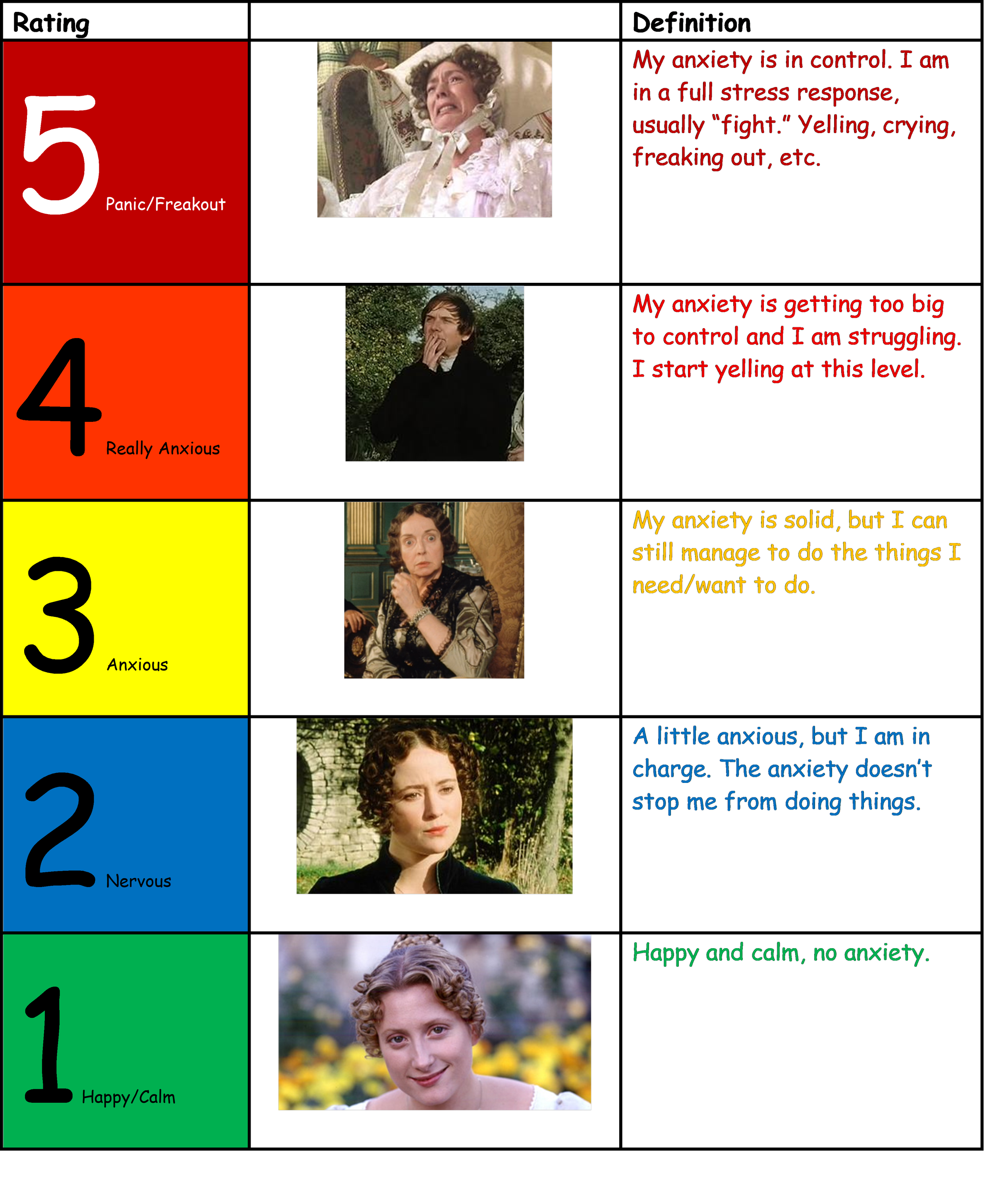Making Likert scales more accessible for autistic people
Likert scales are a useful tool for rating things like mood or pain levels. For autistic people however, they can be a problem as the scales often do not make sense to us. I remember when I was giving birth to my first child, the nurses kept asking me my pain level. They were using a scale that was color coded and had smiley faces that depicted happy to very unhappy on a scale of 1-10. I told them I didn’t understand, and the nurses tried to explain the pain scale to me, saying that 1 was no pain and 10 was the worst pain I had ever felt, like a C-section with no anesthesia. This was very unhelpful as I had never had a C-section with no anesthesia. They changed level 10 to, “the worst pain you’ve ever felt.” At this point in my 28 years, I had never broken a bone, never had stitches, and so my current labor pain WAS the worst pain I had ever felt. (I had had my tonsils out at age 4, but that pain was a distant memory). I kept giving high ratings and they kept trying to push an epidural, which I was trying to avoid. My commitment to my plan of having a natural birth, along with support from my husband, helped me have the natural birth I had wanted, but I decided at that moment that Likert scales just didn’t work for me (I didn’t know why, i.e. because I am autistic, until much later).
My struggles with pain scales continued however in relation to a chronic pain issue that started in my mid-20’s. It wasn’t until just last year, when I was sitting in a PT’s office, that I found a scale that worked. Why did this one work? Because it had clear definitions of the levels printed on the scale (see photo). At this point, my level 10 (highest pain I had ever felt) was three natural childbirths, so instead of over-rating my pain, I had been underrating my pain for years without realizing it. This led to my chronic pain issues not being taken seriously because I had been telling them my pain was at a 2-3 with the highest level being a 4. When I read the definitions, I realized that I was at a 4 most of the time and my highest pain was a 6-7. When I accurately rated my pain, suddenly I had an MRI scheduled and the first real solution I had had in years.
The thing is, autistic people CAN use Likert scales when time is spent to make accommodations that ensure they make sense to the individual. I personally love the book, The Incredible 5 Point Scale, by Kari Dunn Buron, which is a tool created specifically for autistic kids and teens. I personally use this scale every single day with clients of all ages to help them rate their anger and/or anxiety levels. It uses positionality, numbers, and colors to give information about the ratings, but most importantly, the book talks you through how to include things like definitions and pictures to ensure that the scale makes sense. When I use the scale in therapy, I have the client take an active role in creating the pictures and definitions. This means that each scale is individualized and functional for the person because it is personalized to them, their needs, and their experiences.
If you are a service provider, check out Kari Dunn Buron’s book and see how it can be used to make Likert Scales more accessible for the autistic people in your practice. If you are autistic, you can also check out the book and create your own scale, or simply look online before appointments (medical, mental health, etc.) to find a scale that actually makes sense to you. Bring that scale in and explain it to the provider so everyone is on the same page and you don’t end up like me and go 20 years without proper answers!
Just for fun, here is my 5 point anxiety scale!


